How Much Pigment Per Gallon Of Epoxy Resin: Measuring Charts
Welcome to our guide on figuring out the right amount of pigment for a gallon of epoxy. If you’ve ever found yourself wondering about the nitty-gritty details of coloring epoxy, you’re in the right place. We are here to answer your question: How much pigment per gallon of epoxy resin?
In this guide, we’ll break down the process into simple steps, so you can confidently mix your epoxy with just the right amount of powdered pigment.
Below are also a couple of helpful charts of common measurements, and how much colorants to use for smaller projects that are under one gallon. The chats will help you know how much mica powder per gallon of epoxy.
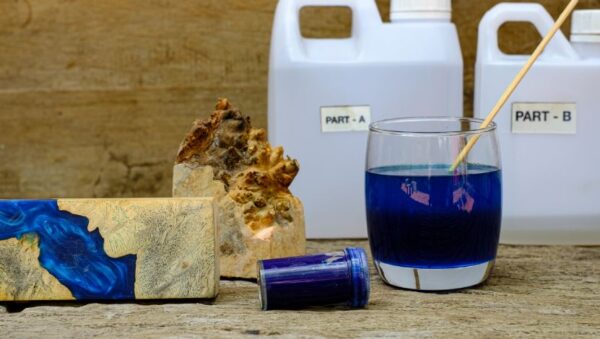
Whether you’re a seasoned DIY enthusiast or just getting started with epoxy projects, we’ve got the best tips on how to measure. Let’s dive in and make your epoxy creations pop with the perfect hue!
In this guide, we are talking about using powdered pigments like mica, powdered resin colorants and thermochromic powders.
How Much Powdered Pigment Per Gallon Of Epoxy?
When using powdered pigment in epoxy, a common starting point is 2-7% by weight. The ideal amount of pigment per gallon of epoxy depends on the intensity of color you desire.
When adding color to resin, start off with adding a little bit of pigment and see if you like the translucency. If you are going for a stronger color, then add more. Do not go over around 7% or this may cause some serious problems like uncured resin or seizing.
But
Understand that there are resins that can take more of a pigment load, even up to 10% and still cure fine. The best way is to test. Test different pigment loads to see how far you can go before coloring a huge batch. Resin is pricey and you only have one chance to get it right. So testing is ideal.
The quantity can vary since the desired outcome may involve a translucent finish, in which case a minimal amount may be plenty. Or a higher pigment load might be required to achieve opaque colors that you cannot see through.
For making something like an epoxy resin table with rocks, you will want it to be on the more transparent side.
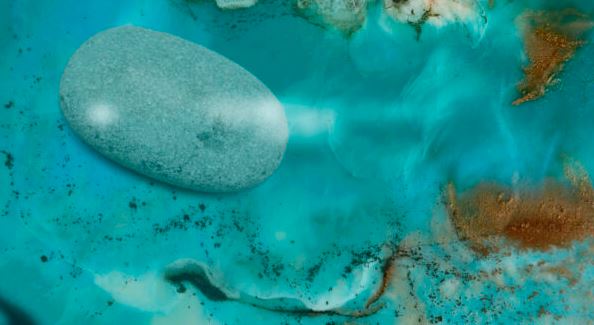
Also, the type of pigment or colorant is important because some powdered pigments have more color density than others depending on the brand. You will generally need to use less pigments when using a high quality brand.
Starting conservatively allows you to adjust the intensity without risking over-pigmentation. Always refer to the manufacturer’s recommendations for precise guidance.
In Summery: As a general guideline, start with a small amount and gradually increase The Pigment Powder until you achieve the desired hue.
To calculate the common amounts of colorants per gallon of epoxy resin you will need a scale that will calculate grams.

Common Amounts Of Powdered Pigments Per Gallon Of Epoxy
| Resin Volume (Equivalent Measures) | 1% Pigment (grams) | 2% Pigment (grams) | 3% Pigment (grams) | 4% Pigment (grams) | 5% Pigment (grams) | 6% Pigment (grams) | 7% Pigment (grams) |
|---|---|---|---|---|---|---|---|
| 1 cup | 0.025 | 0.05 | 0.075 | 0.1 | 0.125 | 0.15 | 0.175 |
| 2 cups (1 pint) | 0.05 | 0.1 | 0.15 | 0.2 | 0.25 | 0.3 | 0.35 |
| 4 cups (1 quart) | 0.1 | 0.2 | 0.3 | 0.4 | 0.5 | 0.6 | 0.7 |
| 8 cups (1/2 gallon) | 0.2 | 0.4 | 0.6 | 0.8 | 1.0 | 1.2 | 1.4 |
| 16 cups (1 gallon) | 0.4 | 0.8 | 1.2 | 1.6 | 2.0 | 2.4 | 2.8 |
It’s advisable to begin with a smaller amount, gradually adding and thoroughly mixing until the desired color is achieved. However, the specific ratio may vary depending on the characteristics of the powdered pigment and the epoxy product.
How Many TBSP is that?
If we assume a common weight of mica to be around 2.5 grams per tablespoon, we can convert the chart to tablespoons. Here’s the chart with pigment ratios ranging from 1% to 7% for different volumes of mixed resin, measured in tablespoons:
| Resin Volume (Equivalent Measures) | 1% Pigment (Tbsp) | 2% Pigment (Tbsp) | 3% Pigment (Tbsp) | 4% Pigment (Tbsp) | 5% Pigment (Tbsp) | 6% Pigment (Tbsp) | 7% Pigment (Tbsp) |
|---|---|---|---|---|---|---|---|
| 1 cup | 0.01 | 0.02 | 0.03 | 0.04 | 0.05 | 0.06 | 0.07 |
| 2 cups (1 pint) | 0.02 | 0.04 | 0.06 | 0.08 | 0.10 | 0.12 | 0.14 |
| 4 cups (1 quart) | 0.04 | 0.08 | 0.12 | 0.16 | 0.20 | 0.24 | 0.28 |
| 8 cups (1/2 gallon) | 0.08 | 0.16 | 0.24 | 0.32 | 0.40 | 0.48 | 0.56 |
| 16 cups (1 gallon) | 0.16 | 0.32 | 0.48 | 0.64 | 0.80 | 0.96 | 1.12 |
This chart provides the amount of powdered pigment (in tablespoons) for pigment ratios ranging from 1% to 7% for various volumes of mixed resin.
Adjustments may be necessary based on the actual weight of the mica pigment you have and its specific density.
Note that these are approximate conversions, and the actual volume may vary depending on the specific properties of the powdered pigment.

What Pigment Load Is Too Much For A Gallon Of Resin?
The ideal pigment load can vary depending on the specific type of pigment, epoxy formulation, and personal preferences. However, a common rule of thumb is to avoid exceeding about 5-6% pigment load by weight in epoxy unless you have done extensive testing on smaller batches first.
Common Problems When Adding Too Much Pigments
1. Poor Mixability:
When too much pigment is added to epoxy, achieving a thorough and consistent mix becomes challenging.
This can result in uneven color distribution throughout the epoxy, leading to areas with concentrated pigment and others with insufficient coloration.
The mixture may become streaky or marbled, detracting from the desired aesthetic quality.
2. Affecting Cure Time:
Excessive pigment can interfere with the curing process of epoxy. The chemical reaction between epoxy components that leads to hardening may be disrupted, causing incomplete or delayed curing.
This not only impacts the final appearance but also compromises the structural integrity of the cured epoxy, potentially leading to issues such as soft or tacky surfaces.
3. Reduced Transparency:
If the goal is to maintain transparency in the epoxy, adding too much pigment can compromise this characteristic.
Excessive pigments may turn the epoxy more opaque than intended, reducing its clarity.
This can be a significant concern in applications where maintaining a clear and transparent finish is crucial, such as in certain types of coatings, casting, or artistic projects.
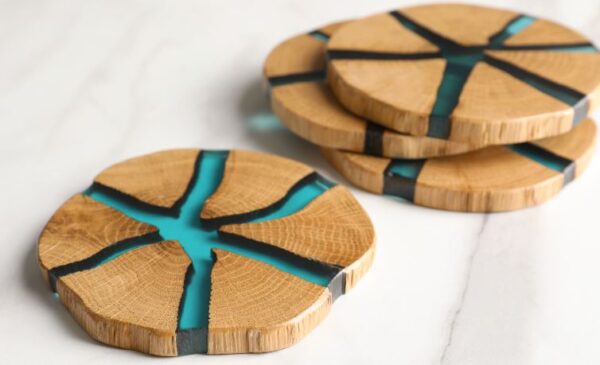
4. Weakened Mechanical Properties:
Overloading epoxy with pigment can have a negative impact on its mechanical properties. This includes a potential reduction in hardness, flexibility, and adhesion.
These compromised properties can affect the overall performance and durability of the cured epoxy, making it less suitable for applications that require specific mechanical characteristics.
5. Seized Resin
Seized resin refers to a state where the resin undergoes a chemical reaction or hardens prematurely, rendering it unusable in its current form.
Adding too much colorant to the resin can contribute to this issue. The introduction of excessive pigment may trigger reactions that cause the resin to seize, creating a hardened mass that is difficult or impossible to work with.
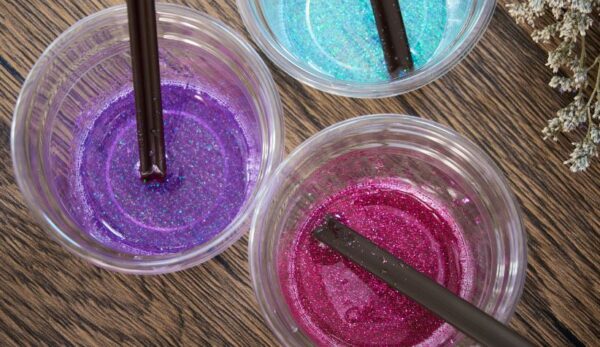
This not only leads to material wastage but also requires additional effort to rectify or dispose of the unusable resin. It’s crucial to adhere to recommended pigment ratios to avoid such problems and ensure successful epoxy applications.
What To Do If You Have Maxed The Pigment Load But Your Resin Needs More Color
If you’ve reached a pigment ratio of 7% and find that you still need more color in your epoxy, there are several steps you can consider.
1. Evaluate the Current Color:
Take a moment to assess the current color of your epoxy. Sometimes, the color may appear differently after curing, so it’s essential to consider the final outcome.
2. Wait for Curing:
Epoxy colors can change as the material cures. Before making any adjustments, allow the epoxy to fully cure. This might take a few days, and the final color may be closer to what you originally desired.
3. Test on a Small Sample:
Before making any adjustments to the entire batch, test your desired pigment ratio on a small sample. This allows you to see the impact of additional pigment without affecting the entire project.
4. Layering Technique:
If the color is not as vibrant as you’d like, consider using a layering technique. Pour a thin layer of clear epoxy over the existing cured layer, adding the desired amount of pigment to the new layer.
This can intensify the color without exceeding the recommended pigment ratio for the entire project.
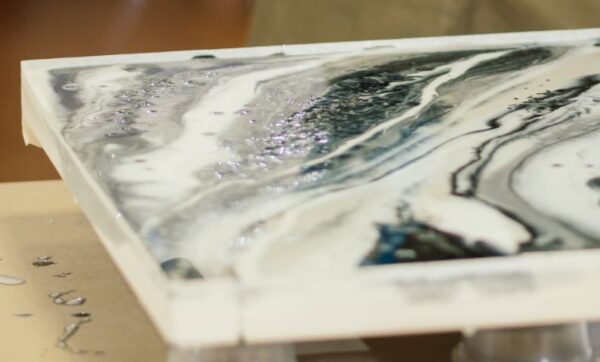
5. Tinted Topcoat or Sealant:
If the epoxy has already cured, you can apply a tinted topcoat or sealant to achieve the desired color. Ensure that the topcoat is compatible with the type of epoxy you’ve used.
6. Painting Onto The Resin:
Painting onto cured resin can be a creative and effective way to enhance or customize the appearance of your epoxy projects. See our guides: How To Paint On Resin & Best Paints For Resin Use.
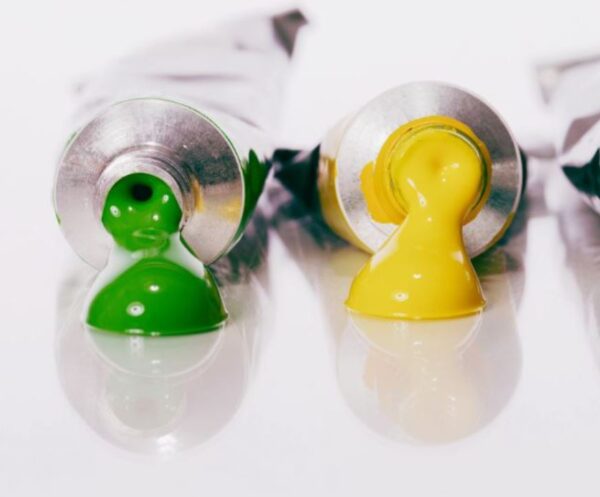
7. Learn for Future Projects:
Use the experience as a learning opportunity for future projects. Adjust your pigment ratios based on the lessons learned from this project to achieve the desired color in subsequent applications.
8. Consult with Manufacturers or Experts:
If you’re unsure about making adjustments, consider reaching out to the manufacturer of the epoxy or seek advice from experts in the field. They may provide guidance on how to modify the color without compromising the integrity of the epoxy.
Remember that exceeding recommended pigment ratios can lead to various issues, so it’s essential to proceed cautiously and test any adjustments on a small scale before applying them to the entire project.
In conclusion, the answer to the question how much pigment per gallon of epoxy resin, the quick answer is between 1-7% by weight.
Thank you for taking the time to explore the world of resin and painting techniques with us. We hope this information has been valuable and inspiring for your creative endeavors.
More Resin Guides

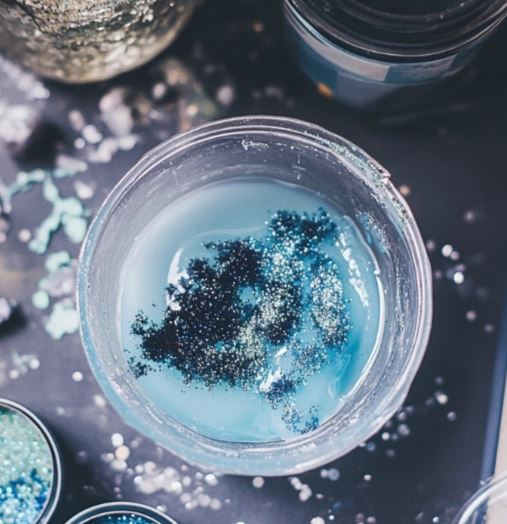
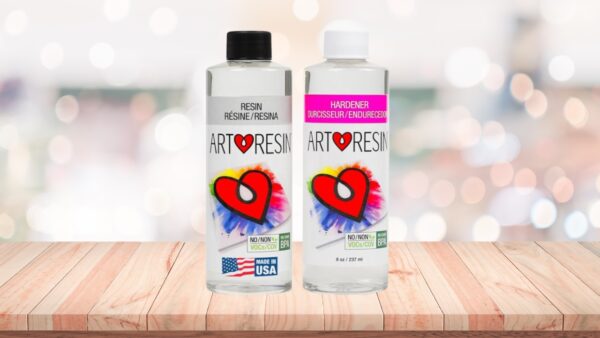
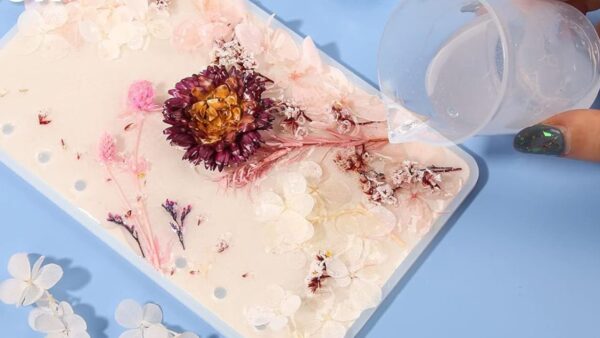

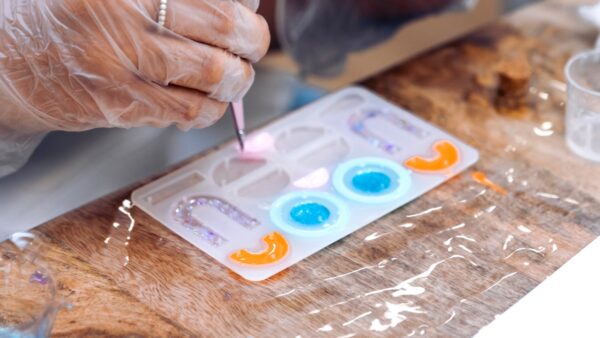
![9 Best Resins For Stabilizing Wood [2025]](https://craftydiyartistry.com/wp-content/uploads/2023/11/resin-for-wood-stabilizing-1b-600x499.jpg)